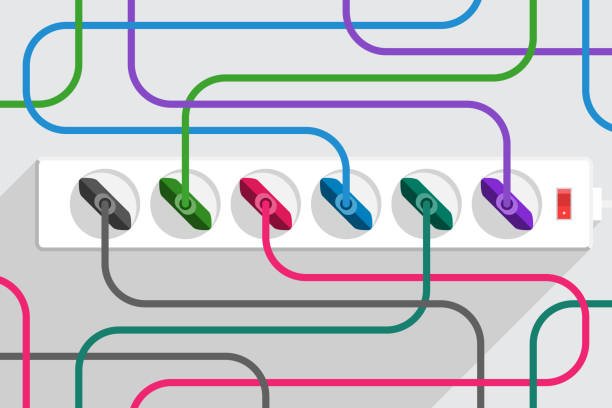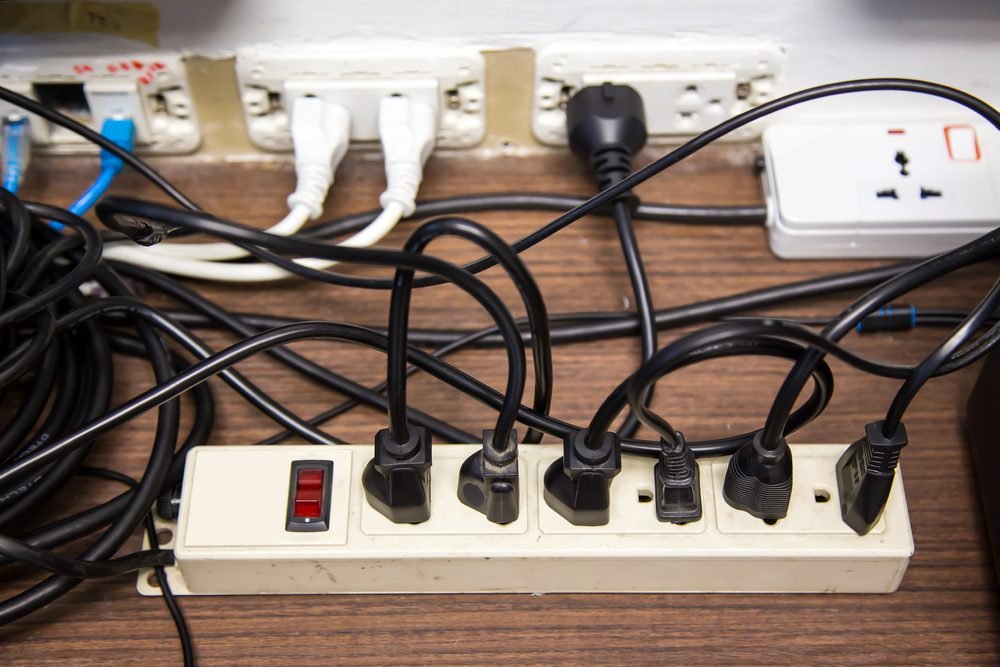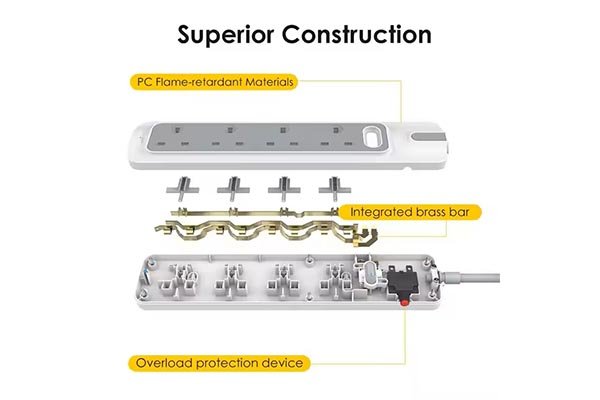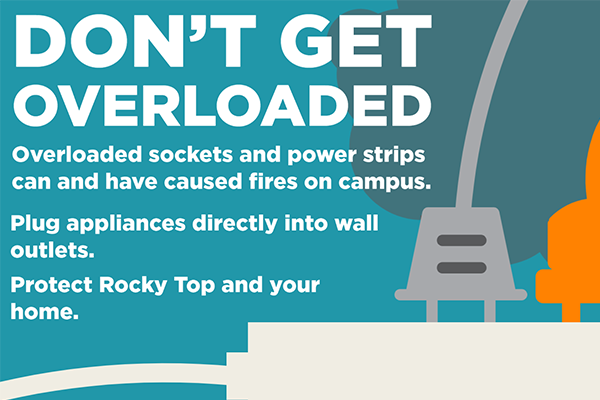
Ever plugged too many devices into a single power strip? It happens to the best of us. Let’s dive into the ins and outs of power strip overloading and how to keep your gadgets safe.
Overloading a power strip means connecting more devices than it’s rated to handle, which can lead to overheating, electrical fires, and damage to your electronics. Understanding the limits of your power strip is crucial for safety and maintaining the longevity of your devices.
It’s easy to overlook the risks until something goes wrong.
What happens if a power strip is overloaded?
When you overload a power strip, the electrical circuit can become stressed, leading to potential hazards.
Overloading a power strip can cause excessive heat buildup, leading to insulation breakdown, short circuits, or even electrical fires. It’s essential to respect the manufacturer’s wattage limits to prevent these dangerous outcomes.

Diving deeper, an overloaded power strip doesn’t just pose a fire risk; it can also damage your devices. Imagine plugging in your computer, phone charger, and a few lamps into one strip. Each device draws a certain amount of power, and collectively, they might exceed what the strip can safely handle.
Understanding Wattage
Wattage is a measure of electrical power. Each power strip has a maximum wattage rating. Exceeding this rating means the strip has to work harder, generating more heat.
| Device | Wattage |
|---|---|
| Laptop | 65W |
| Phone Charger | 10W |
| Lamp | 40W |
| Total | 115W |
If your power strip is rated for 100W, connecting these devices would overload it.
Safety Mechanisms
Most quality power strips come with built-in safety features like circuit breakers or surge protectors. These are designed to cut off power when an overload is detected, preventing potential hazards.
However, relying solely on these safety mechanisms isn’t advisable. It’s better to prevent overloading by distributing your devices across multiple strips or outlets.
What else can occur when power strips or outlets are overloaded?
Overloading power strips isn’t just about the immediate risks. There are broader implications for your home’s electrical system and the lifespan of your devices.
Besides fire risks, overloading can lead to frequent tripped breakers, reduced performance of connected devices, and potential damage to your home’s wiring. These issues can be costly and inconvenient to fix.

Consider the impact on your daily life. Tripped breakers can leave you without power in crucial moments, like when you’re working from home or during an emergency. Additionally, devices operating under power strain may not function optimally, leading to data loss or hardware malfunctions.
Impact on Electrical Infrastructure
Regularly overloading outlets can wear down your home’s electrical infrastructure. Persistent stress on circuits can cause wiring to degrade, increasing the risk of electrical fires and reducing the efficiency of your electrical system.
Device Longevity
Electronic devices are designed to operate within specific power ranges. Exceeding these ranges can cause components to overheat or fail prematurely, shortening the lifespan of your gadgets and leading to unexpected repair costs.
Can power strips overheat?
Yes, power strips can overheat, especially when they are overloaded or of poor quality.
Overheating occurs when the power strip cannot dissipate the electrical energy efficiently, often due to excessive load or inadequate materials. This can lead to melting, smoke, or even fire hazards.

I’ve seen firsthand how an overheated power strip can cause panic. It’s not just about the strip itself; it’s about the safety of your home and loved ones. Using high-quality power strips with proper ventilation can mitigate these risks.
Signs of Overheating
- Warm to the touch: A slight warmth is normal, but excessive heat is a warning sign.
- Discoloration or melting: Visible damage indicates overheating.
- Unpleasant smells: A burning odor suggests components are failing.
Prevention Tips
- Avoid daisy-chaining: Connecting multiple power strips can easily lead to overloading.
- Use power strips with built-in surge protectors: These offer additional safety against voltage spikes.
- Regularly inspect your power strips: Look for signs of wear, damage, or overheating.
What is the overload in different countries?
Electrical standards vary globally, affecting what constitutes an overload in different regions.
Overload thresholds differ based on regional electrical standards like voltage and frequency. Understanding these differences is crucial, especially for international businesses and travelers, to ensure safe usage of power strips.

When working with international clients or products, like our power strips at Howdy, it’s vital to comply with local standards. For instance, Europe primarily uses 230V, while North America uses 120V. These differences influence the design and usage guidelines of power strips.
Regional Standards Overview
| Country Region | Voltage | Frequency | Common Plug Types |
|---|---|---|---|
| Europe | 230V | 50Hz | Type C, E, F |
| North America | 120V | 60Hz | Type A, B |
| Australia | 230V | 50Hz | Type I |
| United Kingdom | 230V | 50Hz | Type G |
Overload Standards by Region
- United States (UL Standards): Power strips are typically rated for 15 amps, with the total load on the strip not exceeding this limit. The total wattage can range from 1,800 watts (for 120V circuits) to 3,000 watts, depending on the voltage.
- European Union (IEC Standards): Power strips in Europe are generally rated for 10 amps, equating to 2,300 watts for 230V circuits.
- China (GB Standards): In China, the standard for power strips is also generally around 10 amps, with power strips rated for up to 2,200 watts for 220V outlets.
Why Standards Matter
These standards ensure that the power strips you purchase are designed to handle typical loads safely. For example, if you are in the United States and use a power strip rated for 15 amps, you can safely plug in devices that collectively use up to 15 amps of power. Exceeding these ratings can lead to overheating, damage, or fires.
Compliance and Safety
Ensuring compliance with local electrical standards is non-negotiable for safety and market acceptance. At Howdy, we adhere to ICE and CE standards to guarantee our products meet the necessary safety and quality requirements for our international clients.
Understanding these regional differences helps prevent accidental overloading and ensures that our power strips are safe and reliable, no matter where they are used.
Conclusion
Keeping your power strips safe is all about understanding their limits and respecting electrical standards. Let’s power smartly and keep our homes safe.






